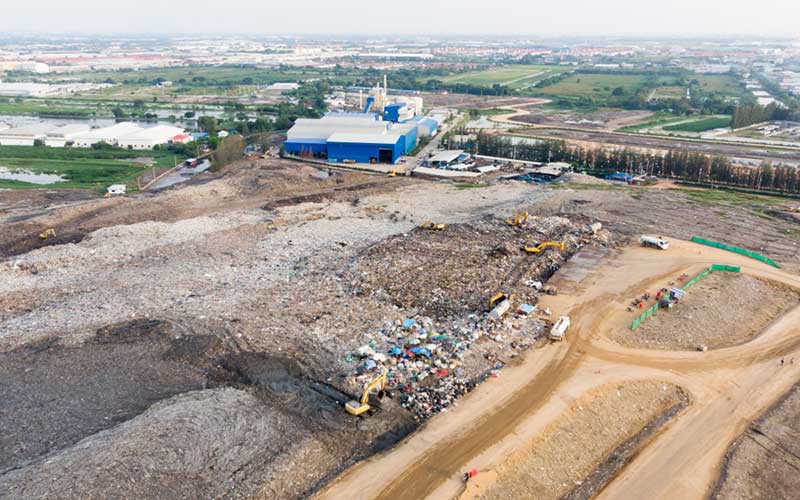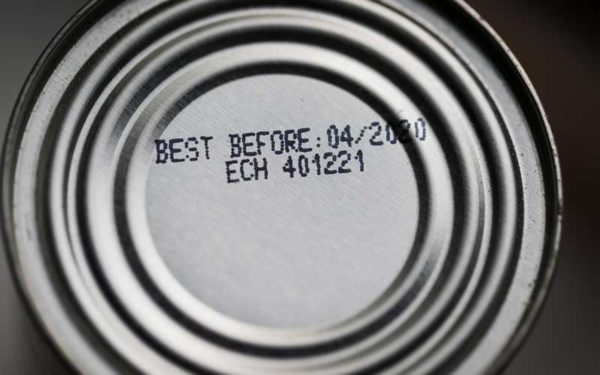
These southern New England landfills are a threat to our communities, our environment, and our climate. Photo: via Shutterstock.
Landfills are a threat to our communities, the environment, and our climate. And expanding a landfill’s acreage or the number of tons it buries each year only increases the pollution it emits. Yet, time and again, corporate waste giants like Casella, Waste Management, and Waste Innovations (formerly Wheelabrator Technologies) have been given permission by the state to build their New England landfills into mega-facilities.
Considering about 80% of what’s buried in our landfills is recyclable or compostable, it’s past time to phase out landfills in New England. A good first step would be to pass legislation that keeps waste companies from building any new landfills and expanding any existing facilities.
CLF’s Zero Waste Project has surveyed all 75 solid waste and ash landfills operating in New England, but we’ve looked most closely at the ones trying to expand. Here’s an overview of four southern New England landfills that CLF is actively advocating against. (We’re also fighting six more landfill expansions in northern New England.)
1. Saugus Ash Landfill | Saugus, Massachusetts
Operator: Waste Innovations (formerly Wheelabrator)
Total Size: 160 acres
Status: Permits to Expand Granted
Expansion: Reopening 39 acres
Tons of Waste Per Year: Currently accepts 113,511 tons a year
Danger: Located in a marshland, the unlined Saugus Ash Landfill leaks contaminants directly into the water that surrounds it. It also lacks groundwater monitoring wells to track just how much contamination it’s leaking. This New England landfill buries toxic ash that contains heavy metals like arsenic and lead, and dioxin – one of the most dangerous contaminants to human health – from Waste Innovations’ adjacent incinerator. What’s more, the landfill sits within a mile of thousands of homes.
How We’re Fighting Back: The Massachusetts Department of Environmental Protection allowed the expansion. Now CLF is working with residents and other partner organizations to hold the Massachusetts Department of Environmental Protection to their more than 25-year-old promise to close the dangerous facility, despite the fact that Waste Innovations representatives have talked publicly about building it even higher.
2. Fitchburg/Westminster Landfill | Fitchburg and Westminster, Massachusetts
Operator: Waste Management
Total Size: 104 acres
Status: Expansion Stopped, For Now
Proposed Expansion: 85 acres in the Leominster State Forest
Tons of Waste Per Year: Currently accepts 538,200 tons a year, more than any other landfill in Massachusetts
Danger: This dangerous landfill releases poisonous gases and leachate into the environment. The proposed expansion would not only damage state forest land but would also harm two neighboring environmental justice communities that already bear the brunt of the site’s pollution. Such a large expansion would slow Massachusetts’s waste reduction efforts for years to come.
How We’re Fighting Back: CLF and its allies stopped legislation that would have allowed the proposed expansion. However, we are keeping an eye on the facility, in case Waste Management reintroduces the legislation this session.
3. Bourne Landfill | Bourne, Massachusetts
Operator: Waste Management
Total Size: 111 acres
Status: Permitting Process to Expand has Started – Massachusetts Environmental Policy Act review is underway
Proposed Expansion: 25 acres and 5,175,000 cubic yards of capacity
Tons of Waste Per Year: Currently permitted to accept 189,000 tons of incinerator ash and 30,000 tons of household trash a year.
Danger: This New England landfill leaks toxic chemicals that threaten nearby water resources and air quality. The expansion will also harm the Eastern Box Turtle, a species of special concern. It will also require taking over prime farmland as well as one of Cape Cod’s least developed and most sensitive natural areas.
How We’re Fighting Back: CLF and coalition partners urged state regulators to deny Bourne’s expansion request. We also asked that the Town undergo an additional Massachusetts Environmental Policy Act review. If our request goes through, that review would require the landfill site to be examined to determine how it impacts the surrounding environment and natural resources.
4. Putnam Ash Landfill | Putnam, Connecticut
Operator: Waste Innovations
Total Size: 60 acres – expected to reach capacity by 2024
Status: Permitting Process to Expand Has Started
Proposed Expansion: 68 acres
Tons of Waste Per Year: The landfill is currently allowed to accept up to 700,000 tons of ash waste per year.
Danger: The toxic leachate seeping out of this ash landfill is collected and pumped to a wastewater treatment facility that empties directly into the Quinebaug River. The facility does not treat the leachate for dangerous “forever chemicals” or other toxics before dumping it in the river. Expanding the landfill would continue to prop up the incineration industry in Connecticut and throughout New England.
How We’re Fighting Back: We are helping community members in Putnam oppose expansion permits.
Zero Waste is the Solution
New Englanders continue to accept dangerous landfills and incinerators as the status quo for managing our trash because public officials fail to implement and enforce waste reduction policies. They are, unfortunately, captives of corporate waste companies who constantly tell us that burning or burying our trash is the only way to deal with our waste. But that’s simply not true.
We have sustainable Zero Waste alternatives that can help phase out polluting trash systems that poison our environment and our communities. These alternatives help us rethink how our products and packaging are designed and how our trash is managed. Plus, Zero Waste programs don’t harm people, the planet, or our economy.
You can help shut down the New England landfills endangering communities in your state. Call on your governor today – urge them to put the health of your state and its people first by replacing these polluting garbage piles with Zero Waste alternatives.



